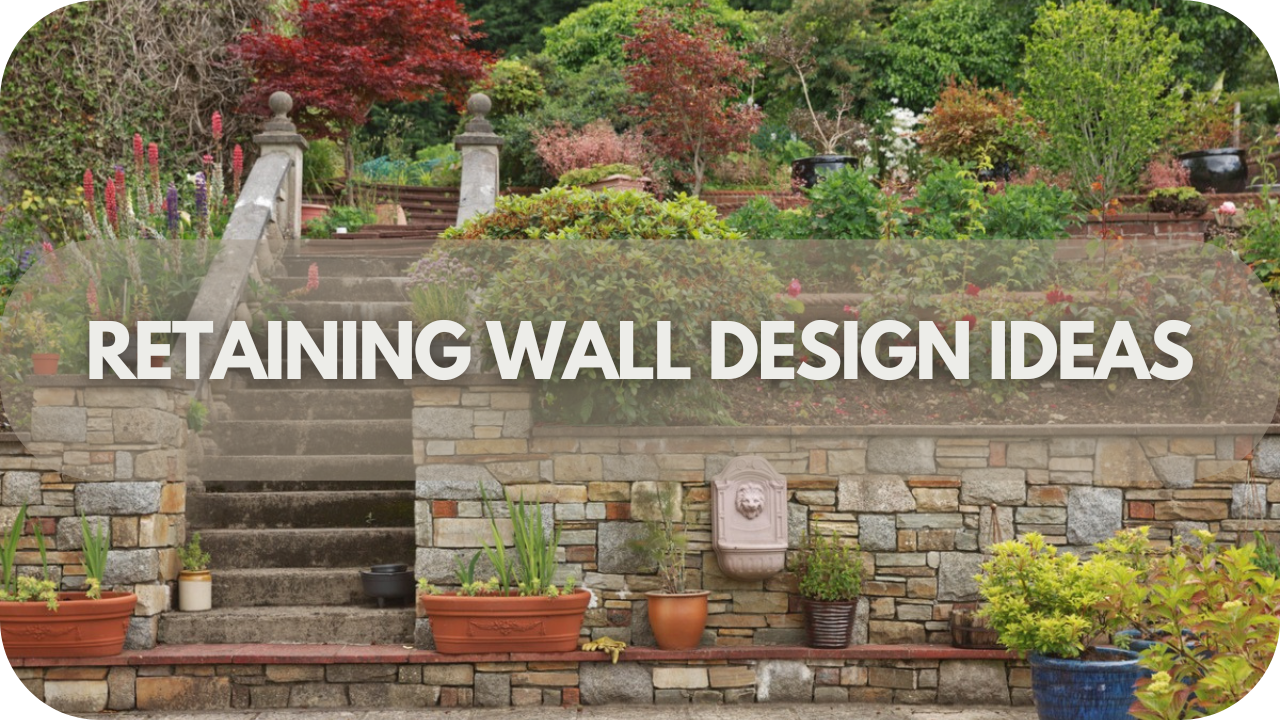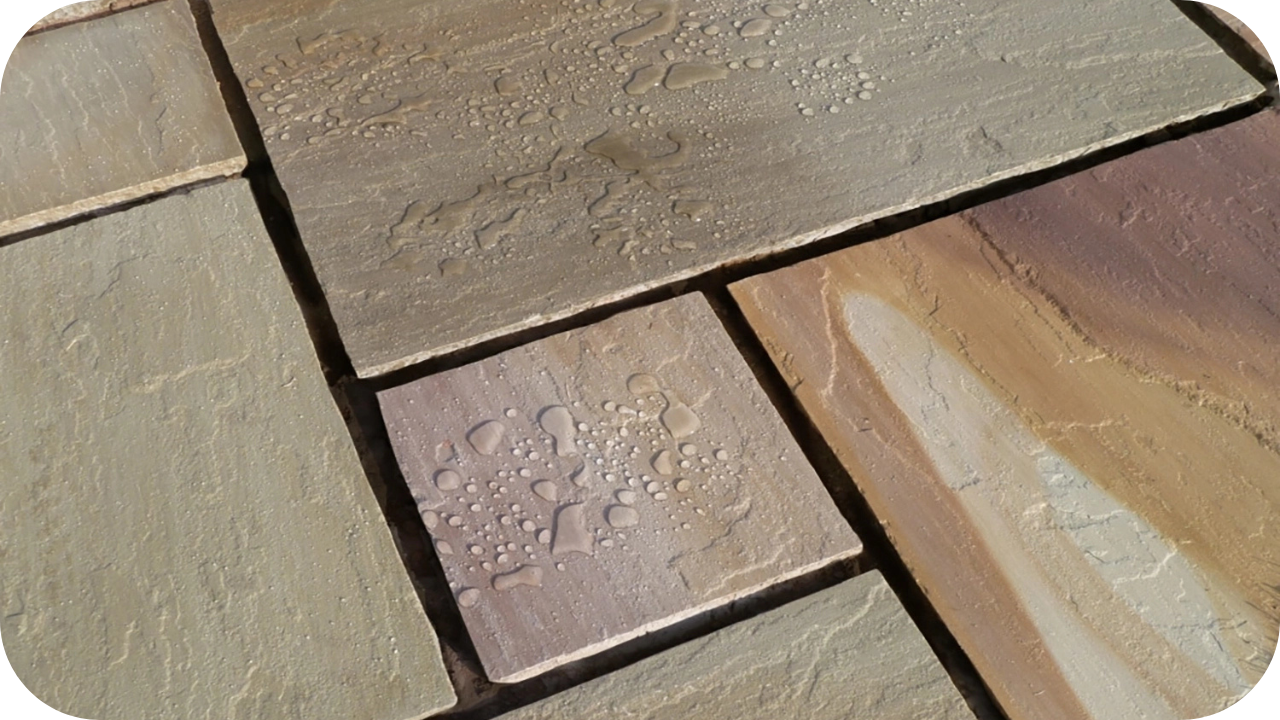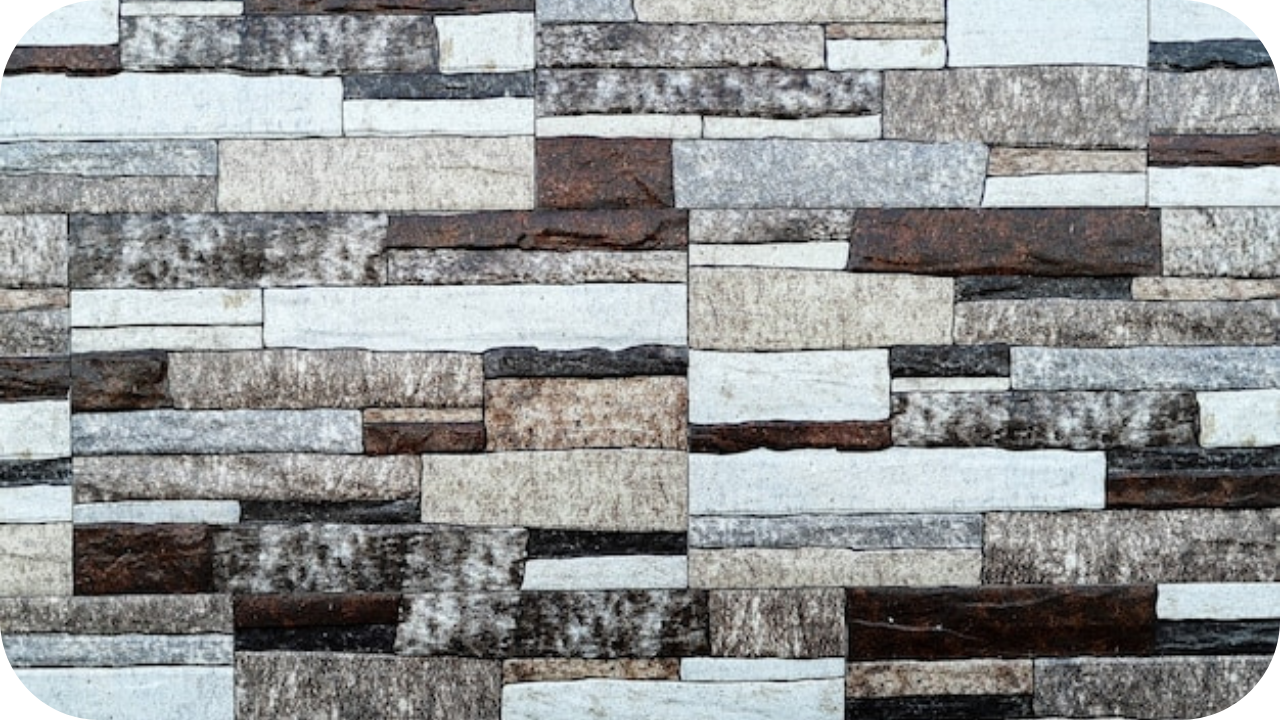
Retaining walls often get overlooked as merely functional structures, but leaving them as plain, dull barriers can save valuable design potential.
Without a thoughtful design, these walls can become eyesores, detracting from the overall beauty of your landscape. Worse yet, they may need to optimise space or fully enhance your garden’s flow.
By exploring creative retaining wall design ideas, you can transform these structures into stunning landscape features that are both practical and visually appealing, adding depth, character, and functionality to your outdoor space.
Basics of Retaining Walls
Retaining walls are structural elements that hold back soil and create level areas in sloped landscapes. They are essential for preventing soil erosion and offering support where the ground needs stabilisation. These walls are commonly used in gardens, around patios, or to create tiered landscaping features.
There are different types of retaining walls, each suited to specific needs. Gravity walls rely on their weight to resist the pressure from the earth, making them ideal for small-scale projects.
Cantilevered walls use a reinforced base, extending more deeply into the ground for added strength, perfect for taller walls. Anchored walls employ cables or anchors embedded into the surrounding soil, offering additional stability for more significant load-bearing needs.
Proper drainage is a crucial aspect of retaining wall design. It prevents water buildup behind the structure, which could damage it over time.
Choosing the suitable material—natural stone, concrete, or timber—depends on your landscape style and the wall’s intended function. Understanding these basics ensures that your retaining wall remains sturdy, functional, and a long-lasting feature in your garden.
1. Tiered Retaining Walls
Tiered retaining walls offer a practical and visually striking solution for sloped properties. By creating multiple levels, these walls add depth and dimension to your outdoor space, transforming steep inclines into functional, attractive features.
Each tier is a separate level for planting different vegetation types, such as flowers, shrubs, or ground cover, creating a lush and layered look.
This design enhances the aesthetic appeal and improves drainage by directing water away from the wall, reducing erosion risk. Each tier can be constructed using different materials, such as natural stone, timber, or concrete, allowing for flexibility in design to match your garden’s style.
Additionally, tiered walls create small, flat surfaces that can be used as seating areas, walkways, or for placing garden ornaments.
The benefits extend beyond beauty—tiered retaining walls also maximise usable space on sloped terrain, turning otherwise unmanageable areas into accessible, garden-friendly zones.
With proper planning, they can seamlessly blend with the natural contours of your landscape, making them a smart choice for both functionality and visual impact.
2. Curved Retaining Walls
Curved retaining walls bring a soft, organic flow to your garden, offering a visually appealing alternative to straight lines. By following the natural contours of your landscape, curved walls create a more harmonious integration with the environment, enhancing the overall design. This design approach is efficient in larger outdoor spaces, where straight walls may appear too rigid or stark.
Curved walls can also guide movement through your garden, directing visitors along paths and highlighting critical areas like seating nooks, water features, or flower beds.
This gentle curve draws the eye, making the space more welcoming and dynamic. The versatile design allows various materials, such as natural stone, brick, or textured concrete, to complement your landscape style.
Building curved retaining walls requires careful planning and precision, as the alignment must be just correct to ensure stability.
Proper drainage behind the wall is crucial to prevent water buildup and maintain structural integrity. With the right design and execution, curved retaining walls can transform your garden, offering a seamless blend of beauty and function that feels natural at home.
3. Retaining Walls with Built-In Seating
Retaining walls with built-in seating offer a clever way to enhance outdoor spaces’ functionality and appeal. By incorporating seating directly into the design, you can create a practical gathering spot without taking up additional room in your garden or patio area. This approach is especially beneficial in compact spaces, where maximising every square metre is crucial.
Built-in seating can be seamlessly integrated with the wall’s structure, using the same materials for a cohesive look or contrasting finishes for added visual interest. Materials like natural stone, brick, or timber can be shaped into benches that follow the curve of the retaining wall, offering comfortable seating that blends into the landscape.
This design is perfect for creating intimate outdoor seating areas around a fire pit, along a garden path, or beside a patio. It also provides practical solutions for spaces where furniture might need to be more convenient or challenging to place.
Additionally, the solid structure of retaining walls means the seating is sturdy and low-maintenance, offering a durable option that can withstand the elements. Combining seating with retaining walls makes your outdoor area more inviting and user-friendly, enhancing form and function.
4. Retaining Walls with Built-In Planters
Retaining walls with built-in planters offer a unique way to blend structure with nature, creating a dynamic landscape feature that serves both functional and decorative purposes.
By integrating planters directly into the wall, you can add layers of greenery without needing separate garden beds, saving space while enhancing the visual appeal of your outdoor area.
Built-in planters are ideal for growing various plants, such as flowers, herbs, or small shrubs, turning your retaining wall into a living wall. This adds colour and texture and provides an opportunity to introduce seasonal blooms or aromatic herbs that enrich the environment. The strategic placement of planters along the wall allows for easy access, making gardening simpler and more convenient.
Incorporating planters can also improve the wall’s drainage by directing water away from the structure, helping to prevent water buildup that could compromise the wall’s integrity.
Materials like natural stone, brick, or concrete can match your garden’s style when designing retaining walls with planters. This approach creates a seamless blend of hardscape and softscape, making your retaining wall a vibrant and engaging feature in the landscape.
Decorative Finishes to Elevate Your Retaining Walls
Decorative finishes can transform a standard retaining wall into a stunning focal point in your landscape. Adding textures, colours, and unique patterns can elevate the look of a retaining wall, making it a feature that enhances the overall aesthetic of your outdoor space.
Textured finishes, such as rough-cut stone or stamped concrete, can add depth and interest to the wall’s surface, creating a more natural and visually appealing appearance.
Coloured stains or paints offer a way to customise the wall, allowing you to match or contrast the surrounding elements in your garden. For a bold look, consider using rich, earthy tones or more vibrant colours to create a striking visual impact. Alternatively, subtle shades can complement traditional garden designs’ classic, timeless feel.
Patterned brickwork or stonework is another way to add character to retaining walls. Incorporating intricate designs or geometric patterns can give the wall a more refined look, turning it into an artistic feature.
Decorative caps or ledges can be added to the top of the wall for a polished finish, providing a neat and complete look. With thoughtful design choices, your retaining wall can become a true highlight of your garden.
Choosing the Right Materials for Your Retaining Wall
Selecting a suitable material is key to building a retaining wall that is both durable and visually appealing. Here’s what you need to consider:
- Natural Stone: Offers a classic, timeless look that blends seamlessly with outdoor landscapes. It’s highly durable but can be costly and requires skilled installation.
- Concrete Blocks: A versatile and budget-friendly option. Available in various colours and textures, they’re ideal for creating customised designs and are suitable for taller walls due to their strength.
- Timber: Brings a warm, rustic charm to modern or traditional gardens. It’s affordable but needs regular maintenance to protect against moisture and decay, especially in damp environments.
- Brick: Provides a clean, uniform appearance perfect for formal gardens. It’s solid and weather-resistant, making it a reliable choice for long-lasting walls.
- Gabion Walls: Constructed using wire cages filled with stones, gabion walls offer a rugged, industrial aesthetic. They are ideal for areas with significant water flow and allow for natural drainage.
- Precast Concrete Panels: Quickly installed and available in various textures and patterns, precast concrete panels are solid and well-suited for large-scale projects where time and uniformity are essential.
- Boulder Walls: Use large natural stones for a raw, natural look that’s especially effective in rustic settings. These are best for lower walls and can be arranged to fit the land’s natural contours.
Benefits of Retaining Walls
Retaining walls are more than just barriers; they bring multiple advantages to your outdoor space:
- Prevents Soil Erosion: Retaining walls support sloped landscapes, helping to hold back soil and reduce erosion, especially during heavy rain.
- Maximises Usable Space: They turn sloped or uneven ground into level areas, creating space for gardens, patios, or other functional outdoor zones.
- Enhances Aesthetic Appeal: With tiered designs, curves, and decorative finishes, retaining walls can become a stunning focal point in your landscape.
- Increases Property Stability: Retaining walls protect the structural integrity of your property, particularly in hilly areas, by preventing landslides and soil movement.
- Improves Drainage: Well-designed retaining walls can direct water away from vulnerable areas, reducing the risk of water damage and pooling around your home.
- Adds Value to Your Property: Increased space, stability, and visual appeal can boost your property’s market value, making retaining walls an intelligent investment.
Conclusion
Transforming your outdoor space with creative retaining wall designs adds beauty and functionality to your landscape. Whether you choose tiered walls, built-in seating, or decorative finishes, each option offers unique benefits.
Ready to elevate your garden’s appeal? Consult with a professional today to explore the perfect retaining wall design that matches your vision and needs.
More To Explore

How to Tell If Stone Is Porous or Not
When selecting stone for your home or project, knowing whether it’s porous can make a huge difference. Porosity affects how your stone absorbs water, stains,

Split Face Stone: What It Is and When to Use It
Looking for a unique, durable material to elevate your next project? Split face stone might be the perfect choice. Known for its textured finish and


